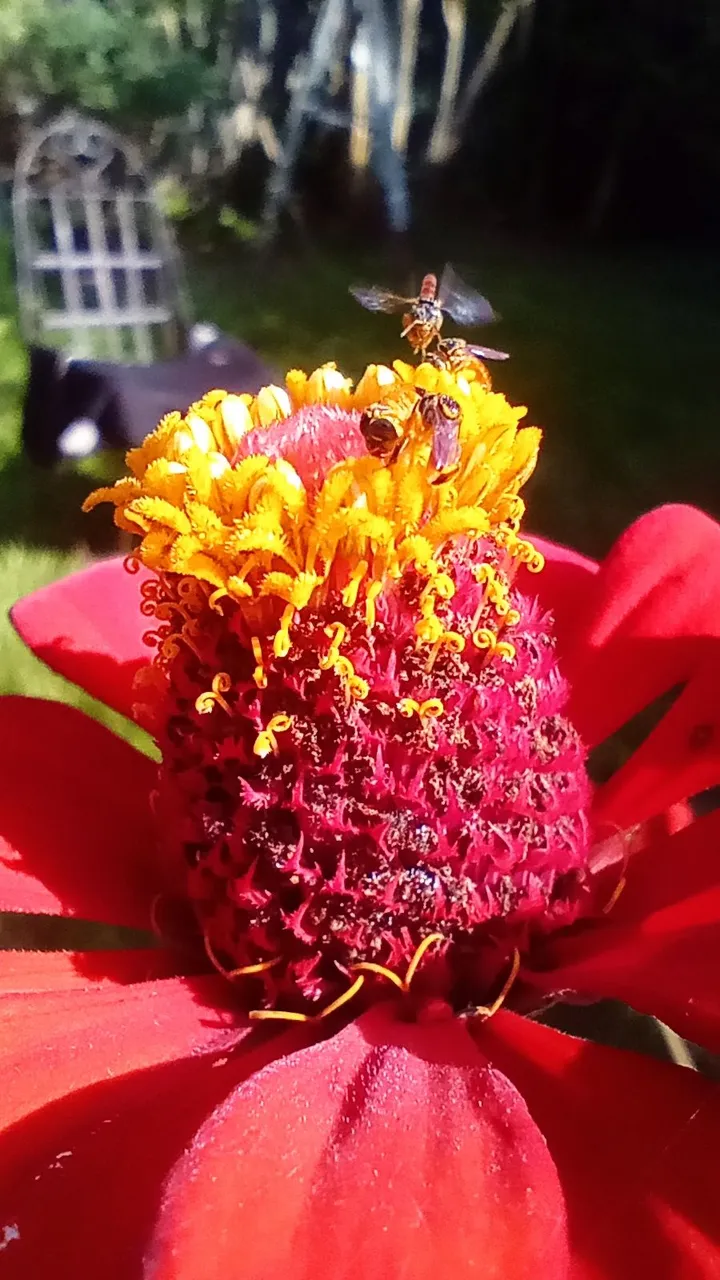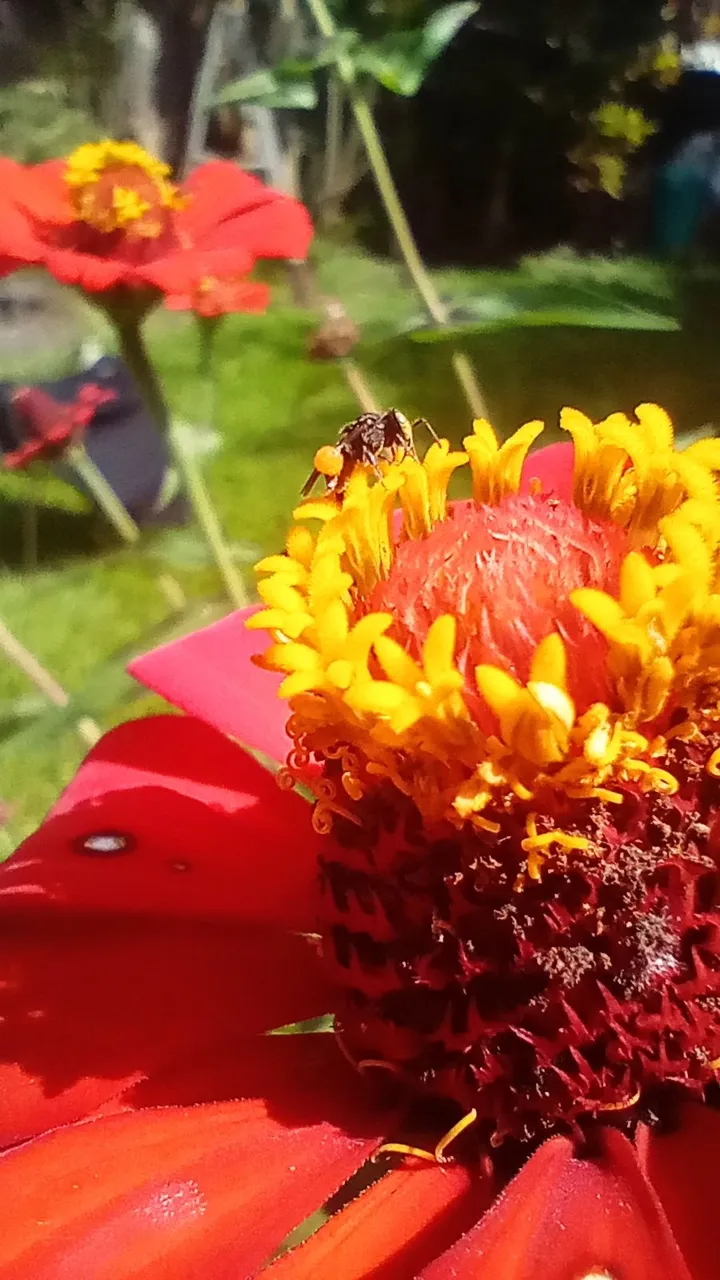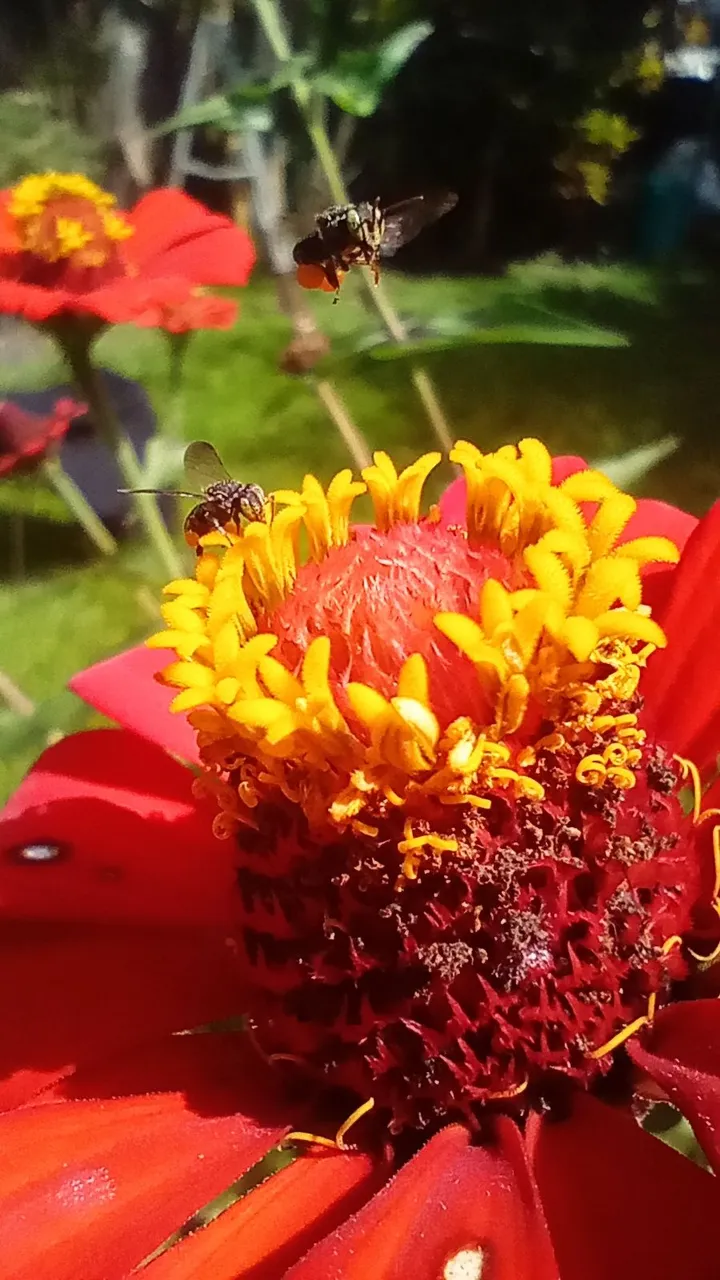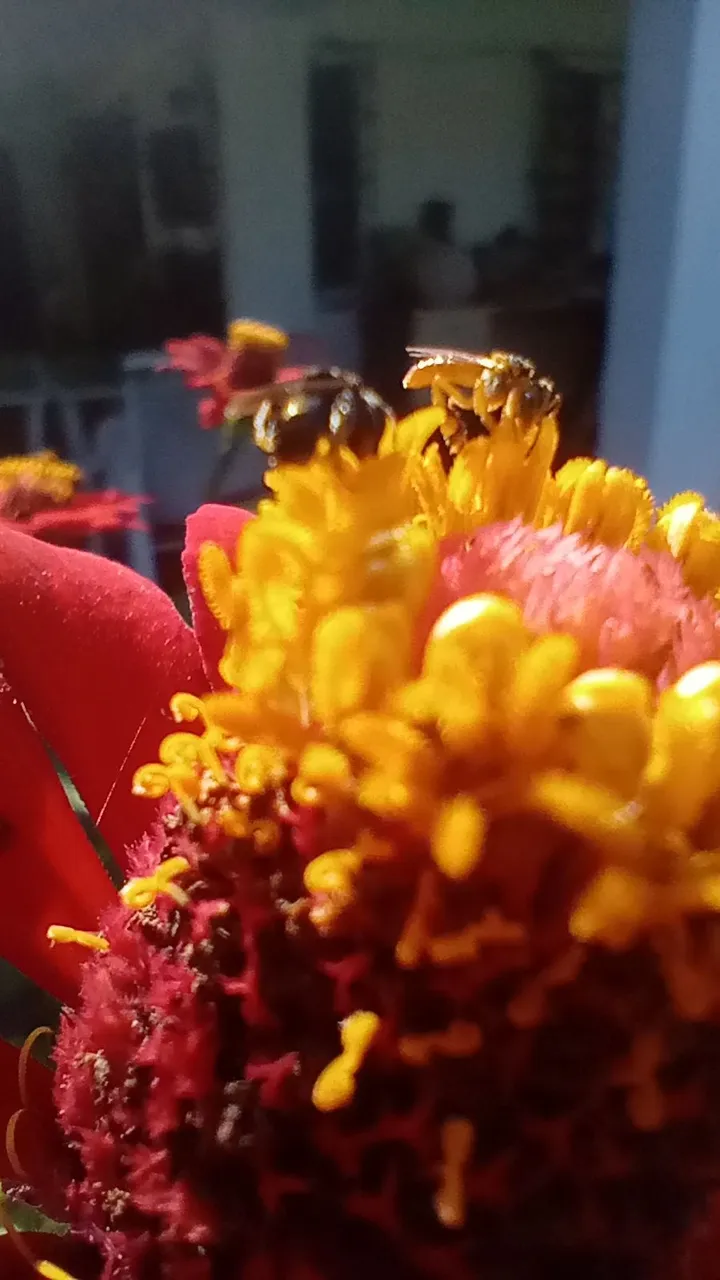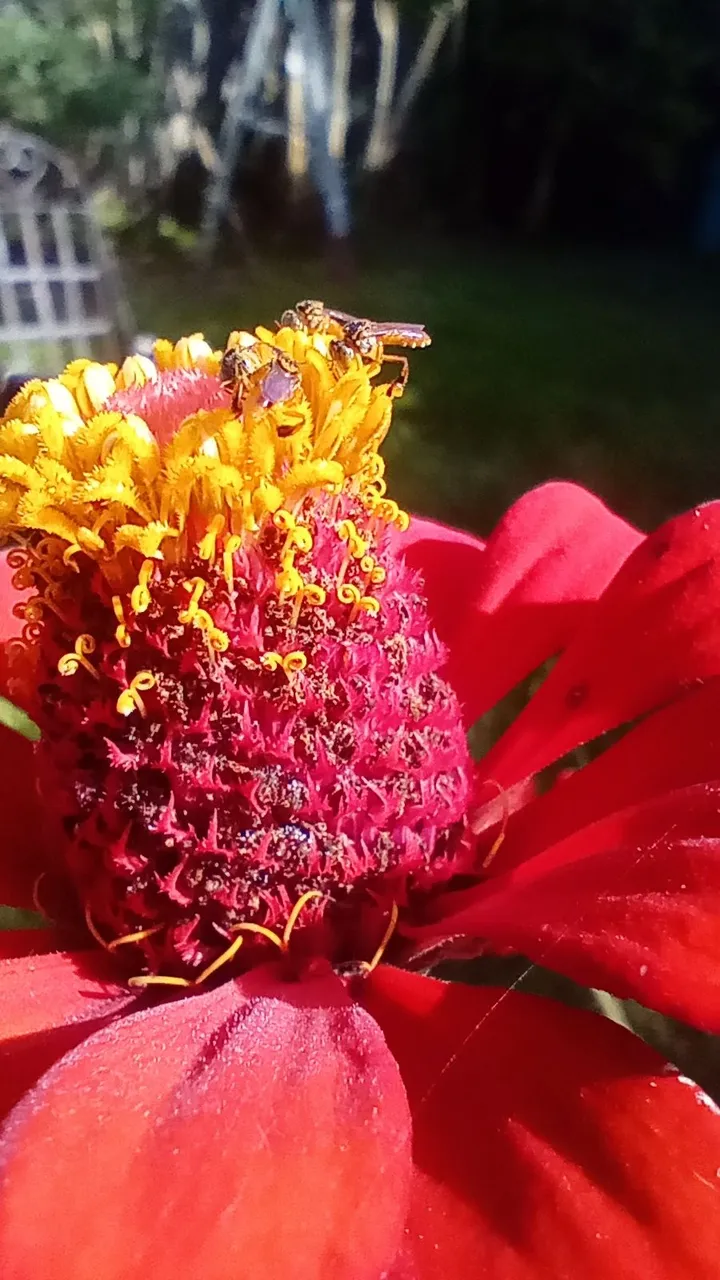Hello Hive friends, welcome to my blog.
In our garden we have some quarantine plants (Zinnia Elegans) that are always in bloom. Butterflies are attracted to them, as are many other insects and birds.
Days ago, when I was trying to photograph butterflies, tiny insects were also hovering over the flowers and seemed to compete for them.
Hola amigos de Hive, bienvenidos a mi blog.
En mi jardín tenemos algunas plantas de cuarentena (Zinnia Elegans) que siempre están en flor. Las mariposas son atraidas por ellas, al igual que muchos otros insectos y aves.
Días atrás, cuando intentaba fotografiar mariposas unos insectos diminutos tambien revoloteaban sobre las flores y parecían competir por ellas.
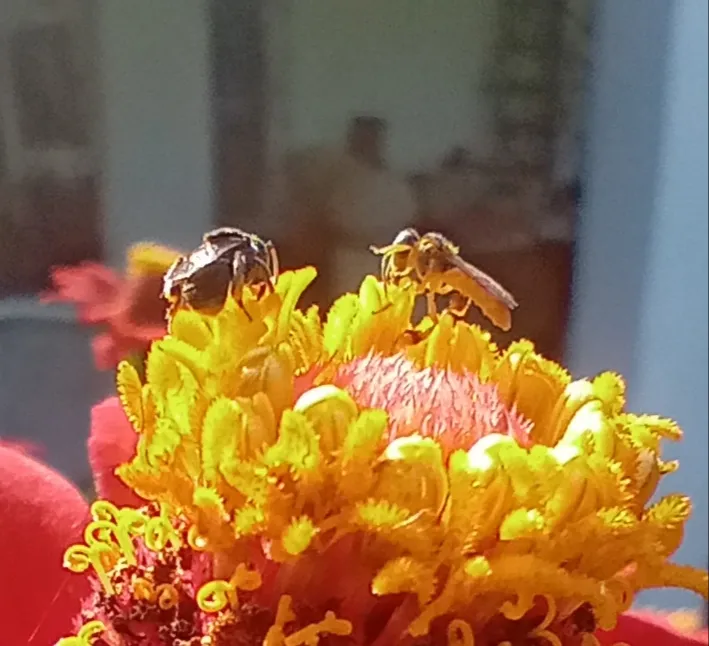
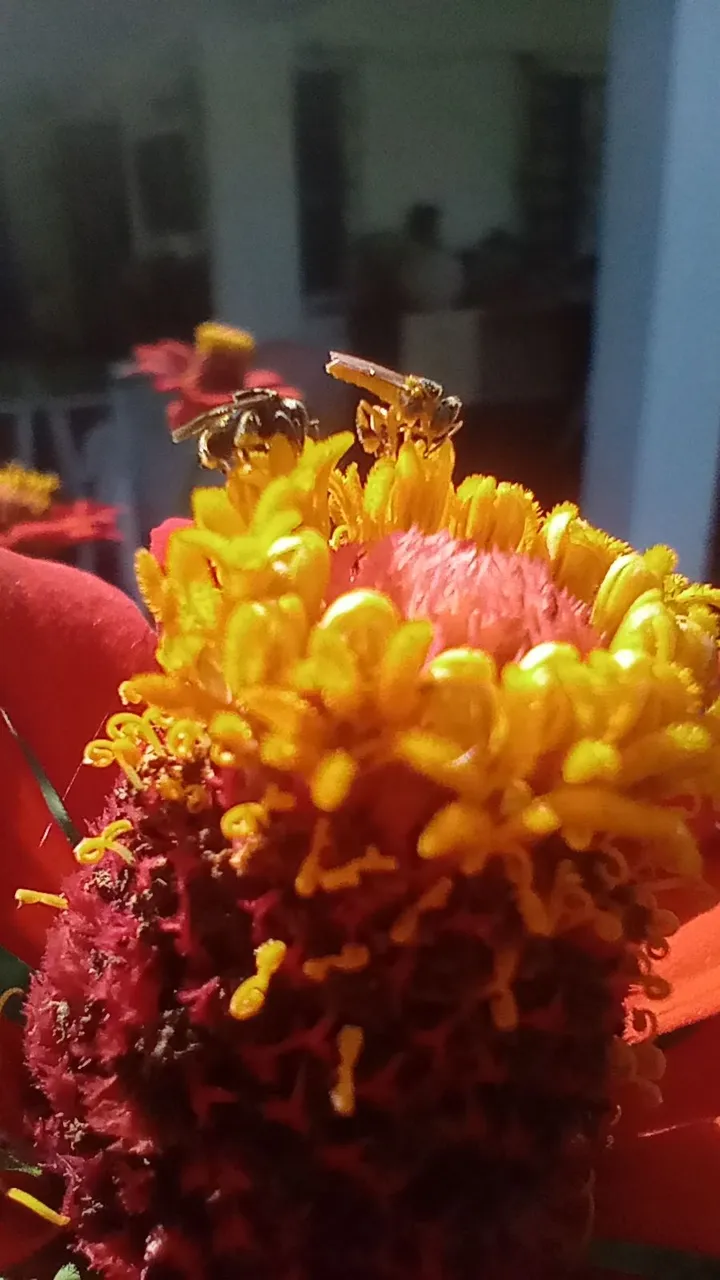
When I paid more attention, took some photos and noticed that they had different shapes and colors.
Apparently they are Tetragonisca Angustula and Plebeia.
Al prestarles mayor atención tomé algunas fotos y noté que tenían formas y colores variados.
Al parecer se trata de Tetragonisca Angustula y Plebeia.
Tetragonisca Angustula and Plebeia are small stingless eusocial bees found in Mexico, and Central and South America. Both belong to the Meliponini tribe, of the Apidae family, common with Apis, the best-known bee.
Scientific classification
Kingdom: Animalia
Phylum: Arthropoda
Class: Insecta
Order: Hymenoptera
Sub-order: Apocrita
Super family: Apoidea
Family: Apidae
Subfamily: Spinae
Tribe: Meliponini
Genus: Tetragonisca / Plebeia
Species: T. angustula / p. Emerina, p. Droryana
Illiger 1806
Tetragonisca Angustula y Plebeia son pequeñas abejas eusociales carentes de aguijón, encontradas en México, y Central y Sudamérica. Ambas pertenecen a la tribu meliponini de la familia Apidae, común con Apis, la abeja más conocida.
Clasificación científica
Reino: Animalia
Fílo: Artropoda
Clase: Insecta
Orden: Hymenoptera
Sub-orden: Apocrita
Super familia: Apoidea
Familia: Apidae
Subfamilia: Spinae
Tribu: Meliponini
Género: Tetragonisca / Plebeia
Especie: T. Angustula
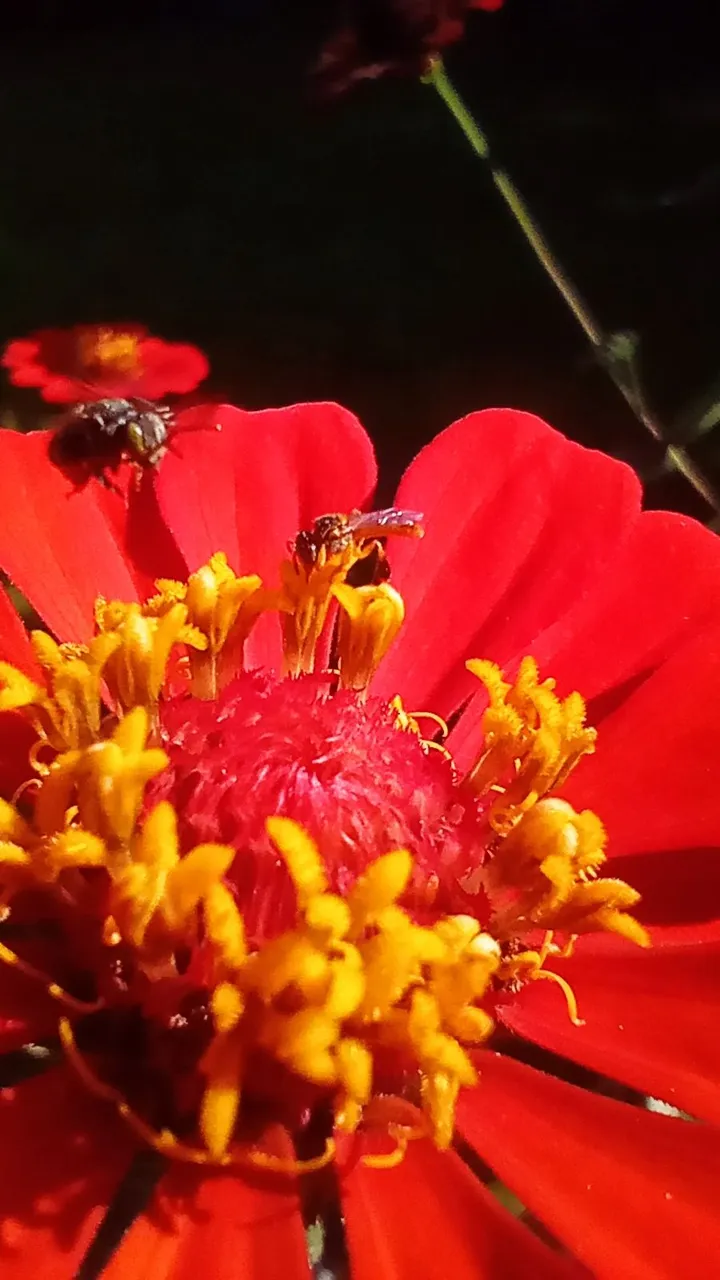
Description
The workers are 4 or 5 mm long; They have a shiny black head and thorax, a slim body and a yellow abdomen, in the case of the Tetragonisca Augustula. The Plebeia appears to have a wider and blacker abdomen. In the tetragonisca the tibiae of the hind legs have pollen baskets, the males do not have a basket and have yellow lines or spots on the face.
Descripción
Las obreras tienen 4 o 5 mm de longitud; tienen cabeza y tórax negro brillante, cuerpo delgado y abdomen amarillo, en el caso de las Tetragonisca Augustula. La Plebeia parece tener el abdomen más ancho y negro. En las tetragonisca las tibias de las patas posteriores tienen canastas para el polen, los machos no tienen canasta y presentan líneas o manchas amarillas en el rostro.
Common names:
Angelita bee, yatei, jatai, jaty, virginitas, angelitas ingleses, españolita, mariola, chipisas, virgencitas, gimero and mariolitas.
Cycle:
The egg lasts 6 days, the larvae 10 days and the pupa 20 days.
Beehive:
They multiply in swarms, they make nests in tree trunks (guaduas) and in walls. The entrance to the nest is a thin-walled, soft wax tube with small holes. Each colony has between 2000 and 5000 little bees.
Nombres comunes:
Abeja angelita, yatei, jatai, jaty, virginitas, angelitas inglesas, españolita, mariola, chipisas, virgencitas, gimero y mariolitas.
Ciclo:
El huevo dura 6 días, la larva 10 días y la pupa 20 días.
Colmena:
Se multiplican bor enjambres, hacen nidos en troncos de árboles (guaduas) y en muros. La entrada del nido es un tubo de cera blanda con pared delgada y pequeños agujeros. Cada colonia tiene entre 2000 y 5000 abejitas.
Uses:
Its honey is highly appreciated for food and medicinal properties are attributed to it. Compared to Apis honey, which is better known and consumed by the population, yatei honey has a higher percentage of moisture and is naturally fermented by microorganisms, so it is more acidic, which gives it particular organoleptic properties.
Being native to the region, the use of meliponini honey helps to conserve the environment.
Usos:
Su miel es muy apreciada para la alimentación y se le atribuyen propiedades medicinales. En comparación con la miel de Apis, más conocida y consumida por la población, la miel de yatei tiene mayor porcentaje de humedad y son Fermentadas naturalmente por microorganismos, por lo que son más ácidas, lo que le confiere propiedades organolépticas particulares.
Al ser nativas de la región, el uso de la miel de las meliponini ayuda a la conservación del ambiente.

This finding was made in Tocuyito, Libertador municipality, Carabobo, Venezuela, in August and September 2021.
All photos were taken by me, @elentogether, with my Redmi 9C Xiaomi Mobil bhone.
For information I mainly use the articles about Tetragonisca Augustula and Plebeia on Wikipedia.
Thanks for taking the time to read about my find.
God bless
Este hallazgo fue hecho en Tocuyito, municipio Libertador, Carabobo, Venezuela, en Agosto y Septiembre de 2021.
Todas las fotos fueron tomadas por mi, @elentogether, con mi teléfono celular Redmi 9C de Xiaomi.
Para informacion principalmente uso los artículos acerca de Tetragonisca Augustula en Wikipedia.
Gracias bor tomarse el tiempo bara leer sobre mi hallazgo.
Dios los bendiga
